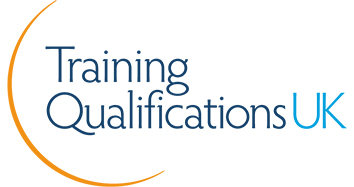
Not everyone studies, or retains information, in the same way. Scientists have come up with several theories to explain how different people respond to different learning styles. Visual, reading and writing, auditory and kinesthetic are four individual learning styles in one of the most popular theories. So which learning styles suit you and how can they simplify studying?
Visual
A visual learner finds studying easier when they can picture an idea or the subject matter in their head. You might be a visual learner if you can remember more information by looking at graphics and diagrams. When visual learners try to remember something, they may visualise what it looks like on a page. Visual learners are often neat, tidy and organised. They are drawn to watching videos and may struggle to focus if they try to read large amounts of text.
Tips for visual learning
- Include images in your notes, so when you think back to a page, you associate it with something visual.
- Turn bullet points into a mind map to help you visualise a topic and understand how everything interconnects.
- Memorise how everything looks on a page and write it out again.
- Use colour by writing on flashcards, or highlight your work to organise your notes and make key points stand out.
- Watch videos on YouTube about what you’re studying.
- Replace words with symbols, or doodles, in your notes.

Reading and writing
If your notes are always pages long and you can spend hours reading a new book, reading and writing might be your learning style. The good news is that writing your assignments and exam papers might not be difficult for you, but organising and prioritising your ideas could be more challenging. Reading around your subject online, or at the library, can be a great way to study and pick up extra information.
Tips for learning
- Rewrite your notes again and again.
- Test yourself by rewriting a page of notes from memory.
- Write out your thoughts on paper and organise them into lists.
- Make notes in your own words on your textbook or post-it notes.
- Find questions about your subject online and write down answers in the style of a quiz.
- Read through what you have written several times.

Auditory
Auditory learners remember what they hear, instead of what they see on paper. They pick up information through listening and speaking. You might be an auditory learner if you enjoy discussions and talking through your ideas. You may find verbal instructions easier to remember than written ones. You’re likely to have a great memory and be a strong communicator, but you might find you don’t make many notes and lose interest in books.
Tips for auditory learning
- Record your notes and play them back regularly.
- Look for podcasts on your subject online, download them and play them as you get the bus or make dinner.
- Read aloud and use repetition to keep something fresh in your mind.
- Explain your subject to a friend, or someone who knows nothing about it.
- Get someone else to read out questions and test you on your knowledge.
- Find a quiet study environment. Music can be distracting, so make sure if you have it on as you study it’s not taking your attention away from your work.

Kinesthetic
Are you someone who enjoys physical activity like playing sport, going to the gym, or making things like crafts with your hands? You might be a kinesthetic learner. Kinesthetic learners pick up information by doing things. This could mean putting an object together or trying out something they have seen in a textbook. If you’re a kinesthetic learner, you’re likely to have more energy and fast reactions, but you may find it difficult to concentrate.
Tips for kinesthetic learning
- Keep your hands busy when you’re studying, by writing notes, playing with a stress ball, or doodling.
- Act out a situation, or physically show someone how to do a practical task.
- Walk around the room, or tap your foot whilst you’re reading something.
- Volunteer and get some practical experience. Putting into practice something you’ve learnt will help you to remember it.
- Take regular breaks so you aren’t stuck at a desk for too long.
- Visualise what you would physically do to solve a problem, or how you would interact with someone.

Which one of these learning styles works for you?
Thinking about learning styles can make a difference, but it’s important to remember that there’s no one-size-fits-all approach to studying. Most people don’t fit into just one category and find that more than one learning style works for them. Mixing things up, or combining tips from several learning styles, can be the most effective way to study and process information.
Discovering where your strengths lie will help you tackle your assignments with ease and enjoy the study process. You can also communicate with your tutor and think about which style of support works best and how they can help you to feel more confident. Put some science into your studying and find the right approach for you.
What type of learner are you? Let us know in the comments below and offer any tips you’ve found work for you!





Leave a Reply